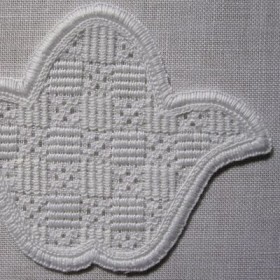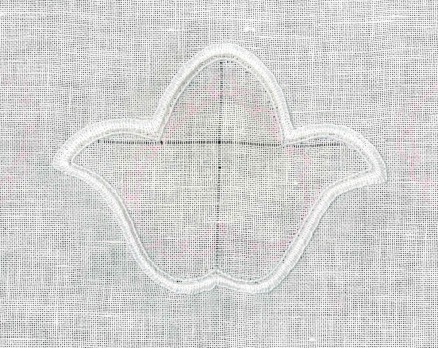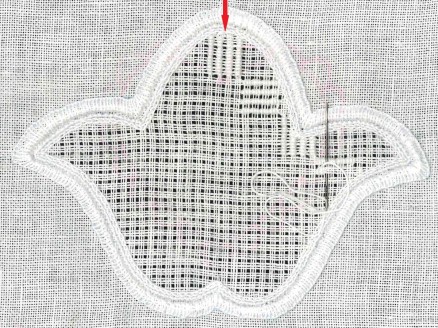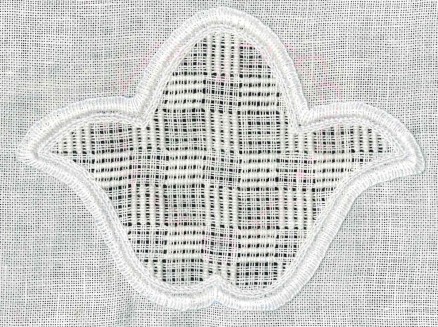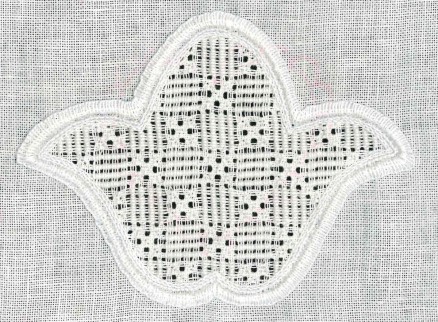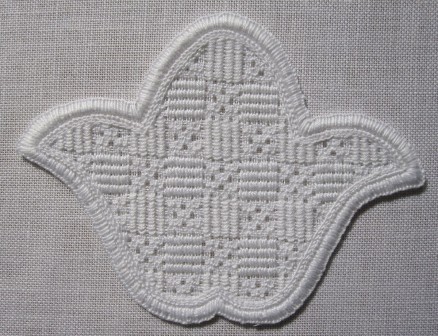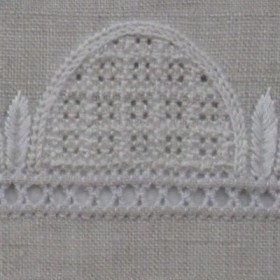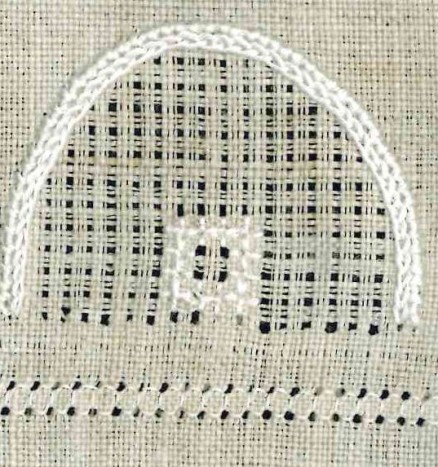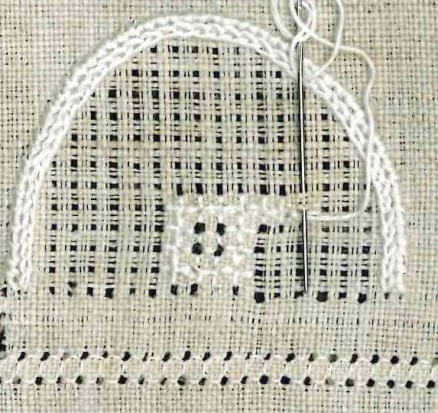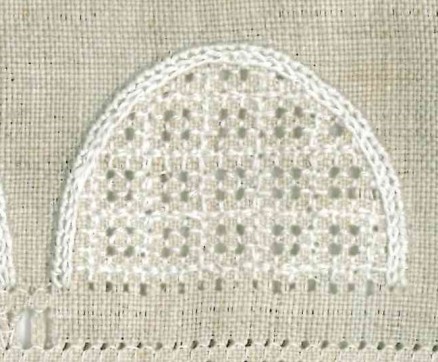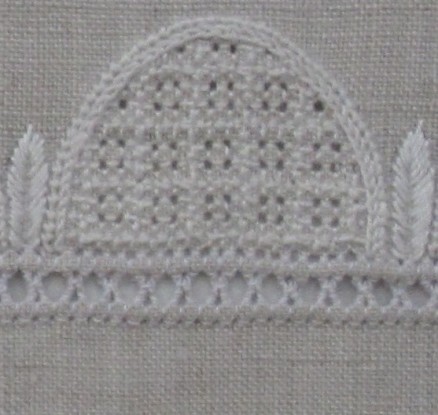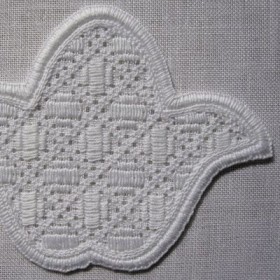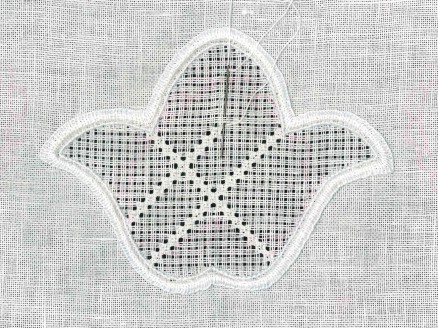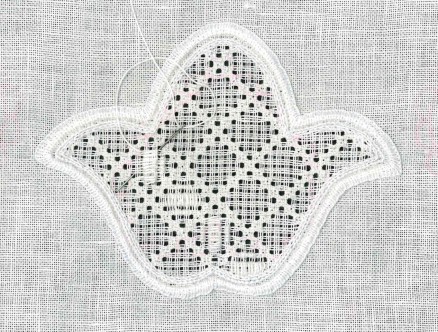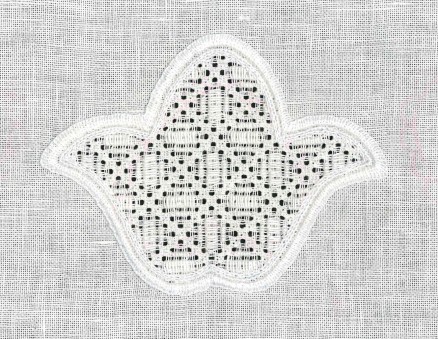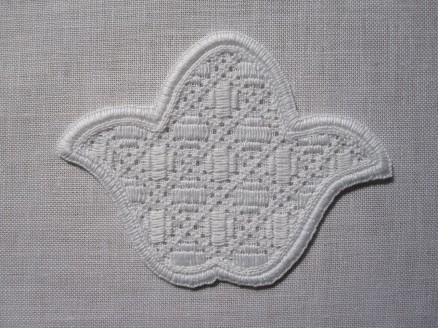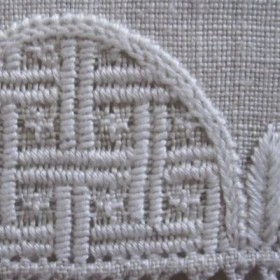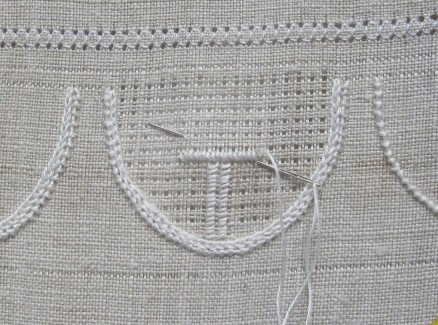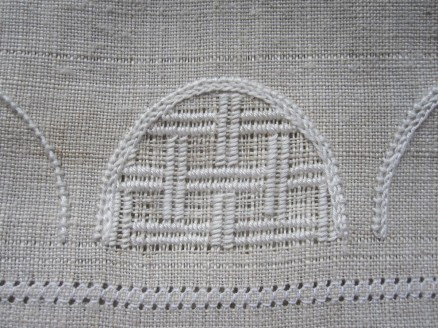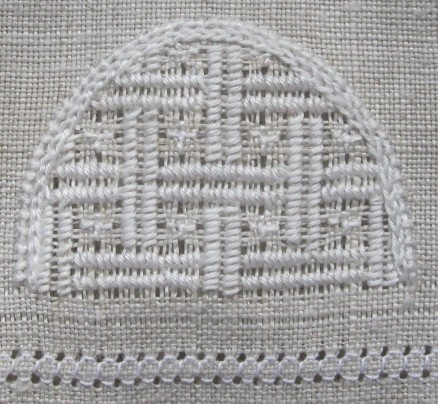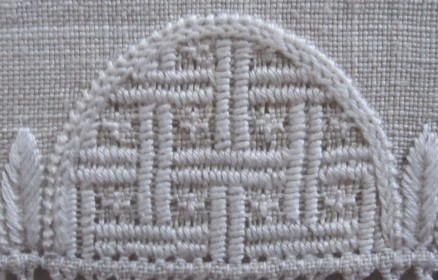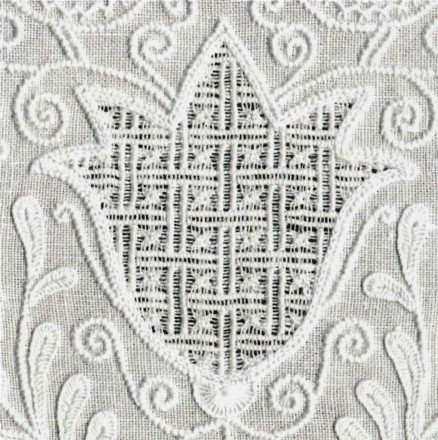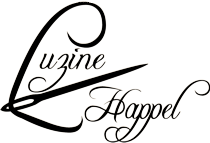No. 451
category: Limet-Filling pattern
stitches used: Satin stitches over 1 square in the width and 3 squares in the length, 4 X 9 stitches of the simple square eyelet and Four-Sided stitches
longitudinal axis: group of three threads (in other shapes or motifs: center = square)
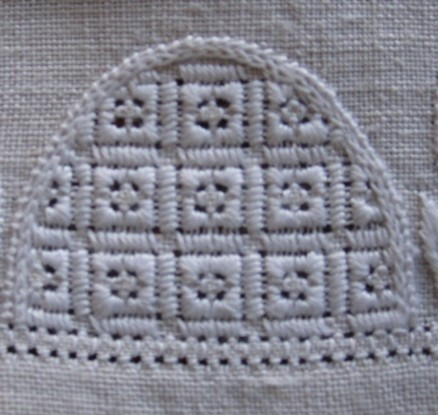
First, in the established Limet grid, work a grid of Satin stitches. Start at the bottom-middle of the shape. Work, in a stair-step manner, Satin stitch bars over one square (3 threads) in the width and over 3 squares (9 stitches) in the length.
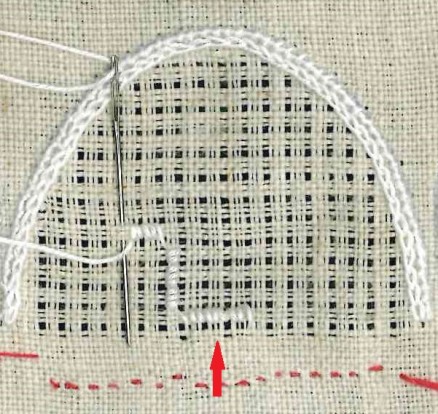
On the way back work the bars mirrored, so that squares of 9 X 9 thread-squares are established. Work the grid all over the shape.
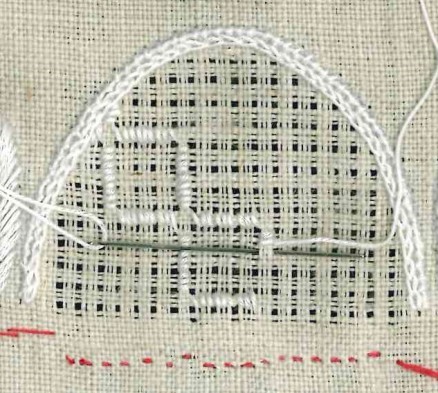
Then work parts of the simple square eyelet. Therefore, starting at the corner points of the center square, work 9 stitches around the corner
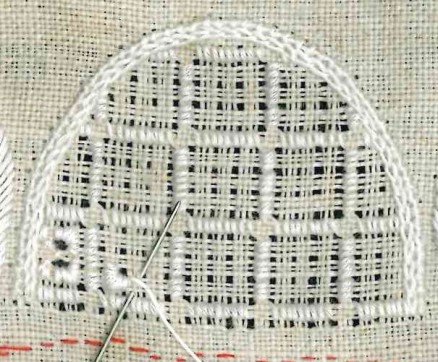
by always coming up in the corner point of the center square, moving outwards and always traveling one thread – 5 stitches to the corner and 4 stitches along the adjacent side. After 9 stitches bring the needle up in the next corner point.
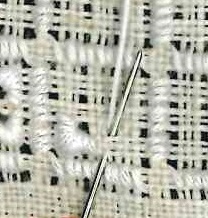
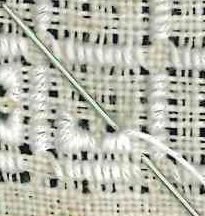
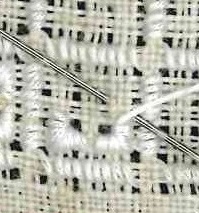
When all four corners are worked, the needle moves to the opposite corner to start there working a Four-Sided stitch around the center square.
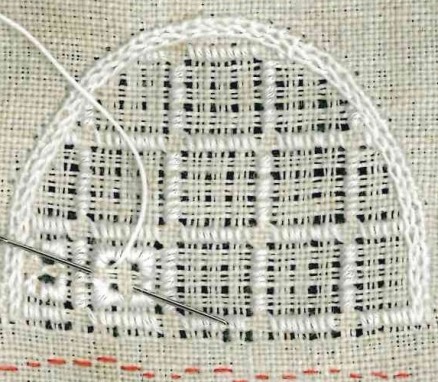
To keep the corner holes around the Four-Sided stitches clear and open, the working thread is tightened to bundle the fabric threads of the center square.
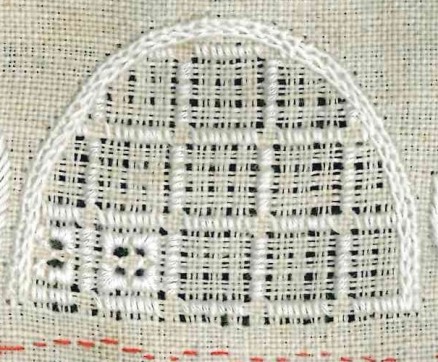
All remaining squares are filled in the same way.
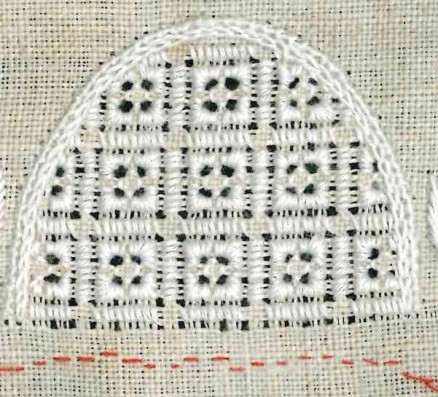
Washed, starched and ironed the pattern gets its full charm. This example was worked on 17/cm thread-count old handwoven linen with Coton à broder No. 20.


